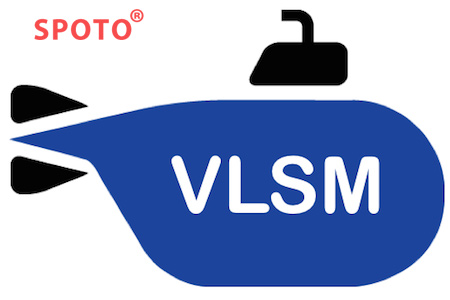VLSM would be standing for Variable Length Subnet Mask where the subnet design would be utilized more than one mask in the same network which means more than one mask is used for different subnets of a single class A, B, C or a network. It is utilized to increase the usability of subnets as they could be of variable size. It would be also defined as a process of subnetting of a subnet.
A private IP network employing more than one subnet mask within its hierarchy is called a network with variable-length subnet masking (VLSM) since the extended
network-prefixes have different lengths. This would be permitting:
· More efficient use of the assigned IP address space for the domain.
· Route aggregation that significantly reduces the amount of routing information at the “backbone” level within the private routing domain.
So, before we discuss the Procedure of Implementing the VLSM, if you wish to have more information regarding the same, you should check out the training courses offered at the SPOTO Club.
The procedure for implementing VLSM
In VLSM, subnets use block size based on requirement so subnetting is required multiple times. Let us assume, that there is an administrator that has four departments to manage. These are purchase and sales department with 120 computers, development department with about 50 computers, accounts department with 26 computers as well as management department with 5 computers.
If the administrator has IP 192.168.1.0/24, department wise IPs can be allocated by following these steps:
1. For each segment select the block size that is considered to be greater than or equal to the actual requirement which is the sum of host addresses, broadcast addresses, and network addresses.
2. Arrange all the segments in descending order based on the block size that is from highest to lowest requirement. The highest IP available has to be allocated to the highest requirement so the sales and purchase department gets 192.168.1.0/25 which has 126 valid addresses that can easily be available for 120 hosts. The subnet mask used is 225.225.225.128
3. The next segment requires an IP to handle 50 hosts. The IP subnet with network number 192.168.1.128/26 is the next highest which can be assigned to 62 hosts thus fulfilling the requirement of the development department. The subnet mask used is 255.255.255.192
4. Similarly, the next IP subnet 192.168.1.192/27 can fulfill the requirements of the accounts department as it has 30 valid hosts IP which can be assigned to 26 computers. The mask used is 255.255.255.224
5.The last segment which would be obliging 5 valid hosts IP which could be fulfilled by the subnet 192.168.1.224/29 which has the mask as 255.255.255.248 is chosen as per the obligation. The IP with the mask 255.255.255.240 could be preferred but it has 14 valid hosts IPs as well as the requirement is less in comparison so the one that is comparable with the requirement would be chosen. Thus there is considered to be less IP wastage in VLSM as compared to FLSM.
Advantages of VLSM over FLSM
1. In Fixed length subnet mask subnetting (FLSM), all subnets are of equal size and have equal number of hosts but in VLSM the size is variable and it can have a variable number of hosts thus making the IP addressing more efficient by allowing a routed system of different mask length to suit requirements.
2. In FLSM there is a wastage of IP addresses but in VLSM there is minimum wastage of IP addresses.
3.FLSM is preferred for private IP addresses while for public IP addresses VLSM is the best option.
So, you would have, now gain some basic knowledge about the VLSM. If you have any further queries, you should enroll yourself in the courses which are offered at the SPOTO Club.
More you may be interested:
1. Introduction to Local Area Network (LAN)
2. The Learning Method And Growth Path of Network Engineering Beginners
3. 802.1Q Tunneling (Q-in-Q) Configuration Example

 Join Telegram Study Group ▷
Join Telegram Study Group ▷














